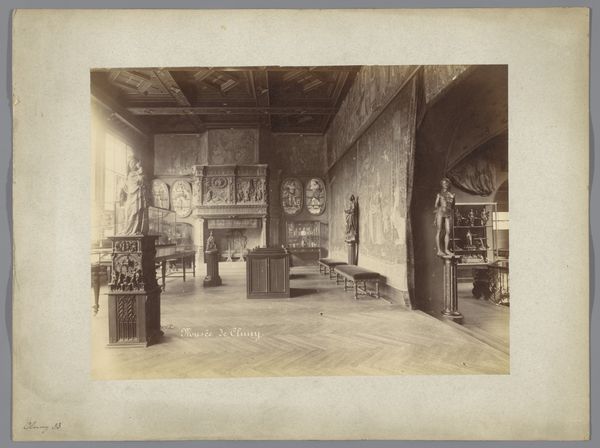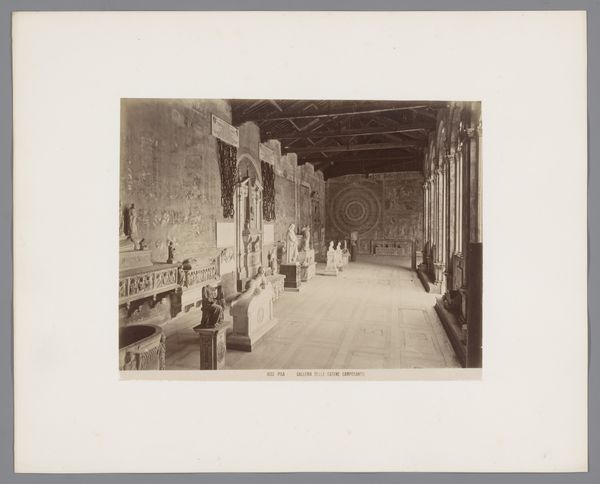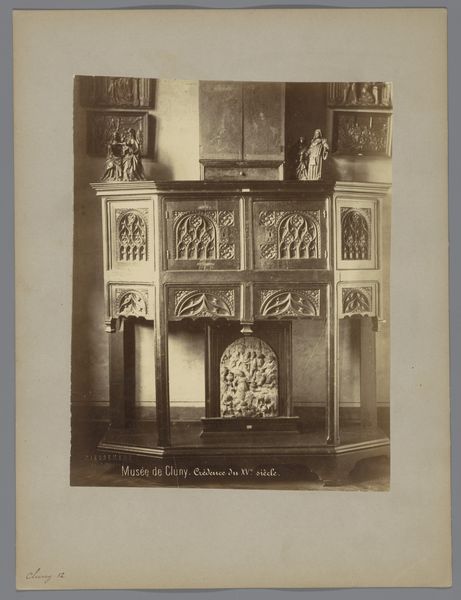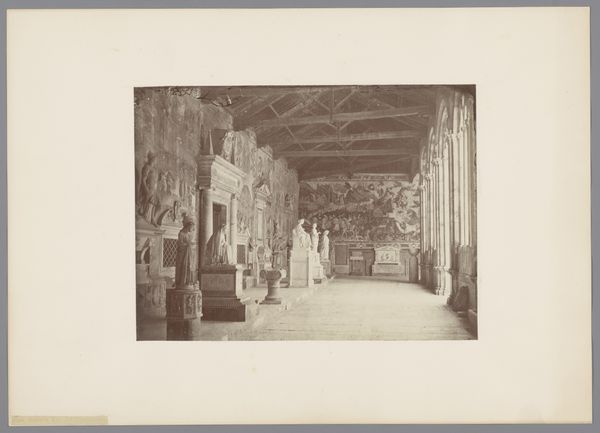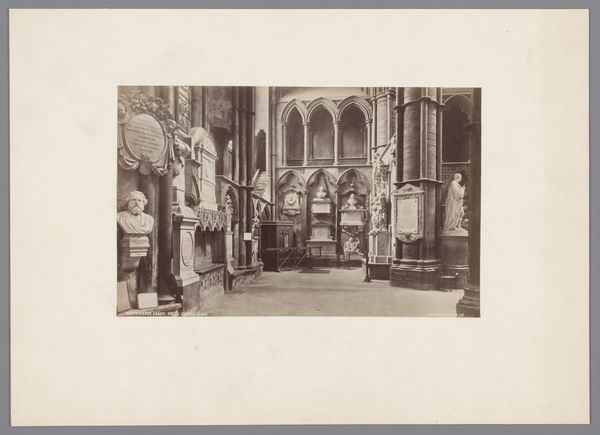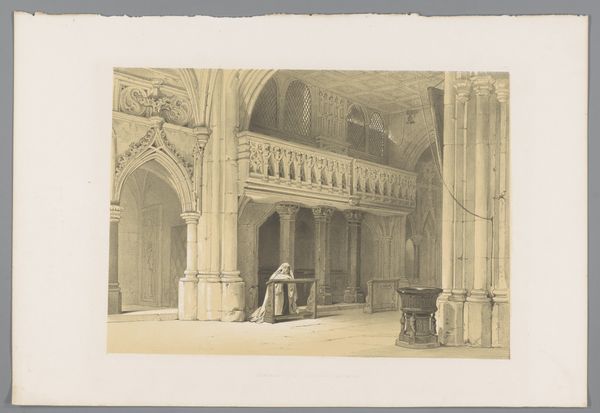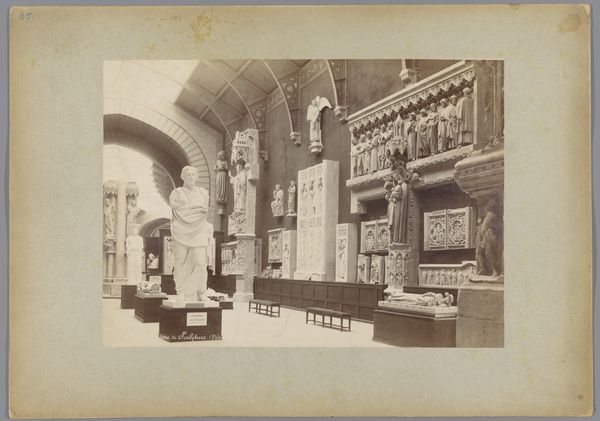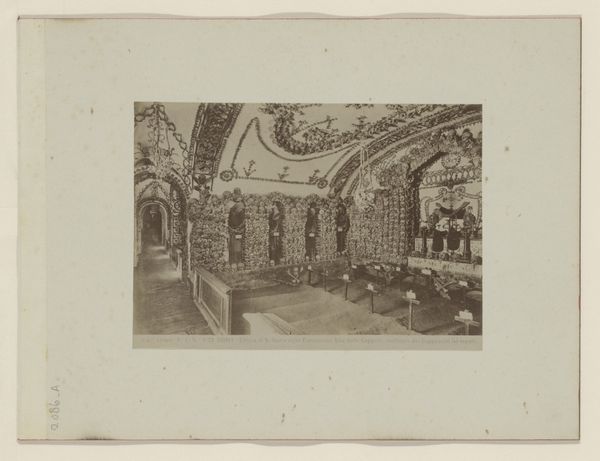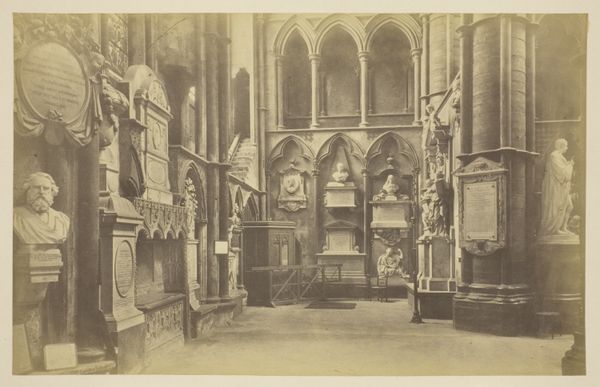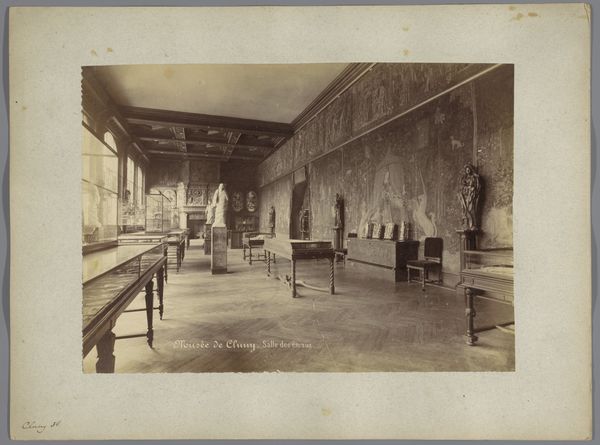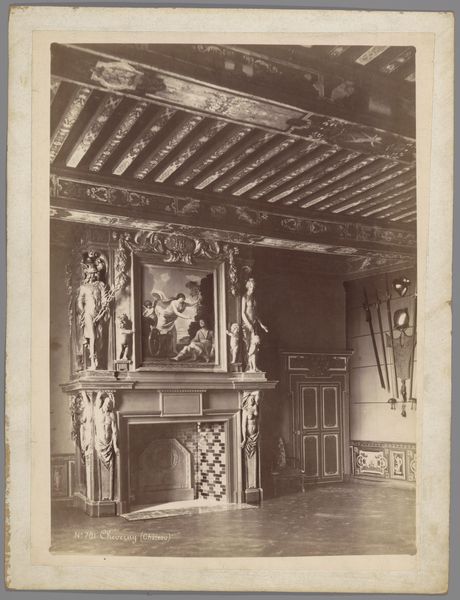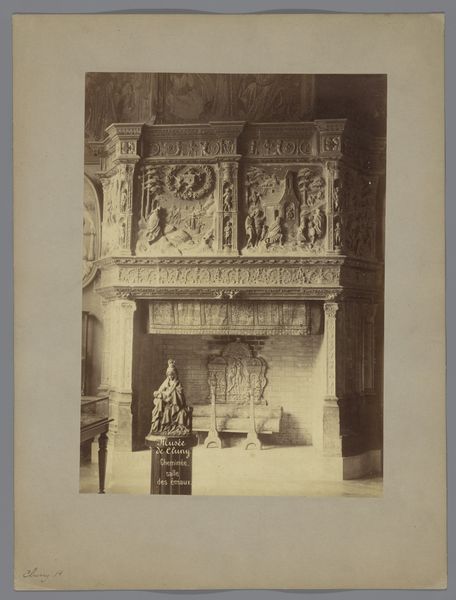
Zaal van Frans I van Frankrijk in het Musée de Cluny te Parijs 1850 - 1900
0:00
0:00
photography, albumen-print
#
toned paper
#
photography
#
19th century
#
history-painting
#
albumen-print
Dimensions: height 260 mm, width 345 mm
Copyright: Rijks Museum: Open Domain
Curator: Before us, we have an albumen print by Médéric Mieusement, created between 1850 and 1900. It's titled "Zaal van Frans I van Frankrijk in het Musée de Cluny te Parijs" and comes to us from the Rijksmuseum collection. Editor: My first thought is how meticulously arranged and theatrical this scene feels, almost like a stage set. The soft sepia tones lend an aura of antiquated grandeur to the hall, drawing me into the past. Curator: Indeed. Mieusement was keen to capture these kinds of historically significant spaces. It’s worth noting that 19th-century photography, particularly in its use within museum documentation, shaped how the public understood historical spaces and artifacts. This wasn't merely recording; it was framing and interpreting cultural heritage. Editor: Absolutely, and I am struck by the recurring motifs: those intricate carvings on the furniture. It gives an impression of intertwined meanings, all pointing back to notions of royalty, legacy, and perhaps even specific mythologies of the French court. Curator: Yes, these symbols offer keys to interpreting the values and power structures inherent within that space. The Musée de Cluny itself, dedicated to the medieval period, presented a specific narrative of French identity, carefully curated and displayed. Editor: So, through those carefully posed artefacts, viewers may have gotten an impression about the aura of kings, or other authority figures, over time. Was this to solidify contemporary French national identity by visualizing its connection to, say, monarchic strength and sophistication? Curator: Precisely. These photographs were often circulated as postcards or incorporated into albums, effectively disseminating these narratives and reinforcing certain national narratives to an audience hungry for connections with their past. Editor: The photograph feels much more significant now that you mentioned circulation of albums. Considering its symbols and the medium used, it's a time capsule preserving not only a historic space, but the public's attitude toward this history, the identity that they're willing to remember and relive over and over again. Curator: And perhaps even forget or reimagine parts of. After all, every selection and presentation of heritage inevitably involves choices about what is remembered and what is obscured. Mieusement's image stands as a fascinating document, revealing much about the interplay of history, photography, and national identity in 19th-century France.
Comments
No comments
Be the first to comment and join the conversation on the ultimate creative platform.

